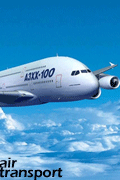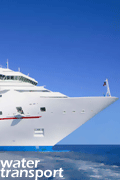Monday, May 4, 2009
We would like to welcome you to the Maritime Administration's Deepwater Port Licensing Program website for the licensing of offshore liquefied natural gas (LNG) and oil receiving port facilities. The Maritime Administration is charged with meeting the country's commercial mobility needs while maintaining national security and protecting the environment. The Deepwater Port Licensing Program addresses all three of these goals by reducing the need for LNG and oil tankers to enter busy seaports, while maintaining a high level of security and providing a viable environmentally friendly fuel source.
This website is a resource for you to learn about the Deepwater Port Licensing Program and how it goes about fulfilling the requirements mandated in the Deepwater Port Act of 1974, as amended. Please refer to this site often to keep up-to-date on our progress, important events and information related to the licensing process.

The Maritime Administration will continue to work with Federal, state, and local agency partners to ensure a comprehensive and efficient deepwater port licensing process. The concerns of state regulators, environmental organizations, and marine industry groups are given significant weight in the licensing process. With five (5) active applications and more expected next year, the Maritime Administration will continue the highly technical and intensive work of processing deepwater port applications and issuing licensing decisions.
The application process is clearly defined, time sensitive, and designed to accelerate the construction of LNG and oil deepwater ports. We want to assure you that the Maritime Administration will continue to expedite the application process, and strive to protect the nation's environment, meet our growing energy needs and improve waterborne transportation efficiencies.
When finally licensed and operating, deepwater port facilities will enable the United States to receive large amounts of natural gas in an environmentally safe and efficient manner. This is an extremely significant development in light of the fact that overseas exploration has resulted in the discovery of substantial new natural gas resources. Further, the demand for natural gas in the United States is projected to increase from 21.70 trillion cubic feet annually in 2008 to 23.80 trillion cubic feet in 2016. Imports of LNG are projected to grow from 0.50 billion cubic feet per year in 2008 to 2.80 trillion cubic feet by 2030. Clearly, the offshore LNG and oil facilities licensed by the Maritime Administration will provide an efficient conduit through which this valuable resource can flow into the United States.
Source: http://www.marad.dot.gov/
This website is a resource for you to learn about the Deepwater Port Licensing Program and how it goes about fulfilling the requirements mandated in the Deepwater Port Act of 1974, as amended. Please refer to this site often to keep up-to-date on our progress, important events and information related to the licensing process.

The Maritime Administration will continue to work with Federal, state, and local agency partners to ensure a comprehensive and efficient deepwater port licensing process. The concerns of state regulators, environmental organizations, and marine industry groups are given significant weight in the licensing process. With five (5) active applications and more expected next year, the Maritime Administration will continue the highly technical and intensive work of processing deepwater port applications and issuing licensing decisions.
The application process is clearly defined, time sensitive, and designed to accelerate the construction of LNG and oil deepwater ports. We want to assure you that the Maritime Administration will continue to expedite the application process, and strive to protect the nation's environment, meet our growing energy needs and improve waterborne transportation efficiencies.
When finally licensed and operating, deepwater port facilities will enable the United States to receive large amounts of natural gas in an environmentally safe and efficient manner. This is an extremely significant development in light of the fact that overseas exploration has resulted in the discovery of substantial new natural gas resources. Further, the demand for natural gas in the United States is projected to increase from 21.70 trillion cubic feet annually in 2008 to 23.80 trillion cubic feet in 2016. Imports of LNG are projected to grow from 0.50 billion cubic feet per year in 2008 to 2.80 trillion cubic feet by 2030. Clearly, the offshore LNG and oil facilities licensed by the Maritime Administration will provide an efficient conduit through which this valuable resource can flow into the United States.
Source: http://www.marad.dot.gov/
Labels: Port Licensing program
posted by transport blogs
@ 9:56 PM
permanent link | Post a Comment
|
![]()









